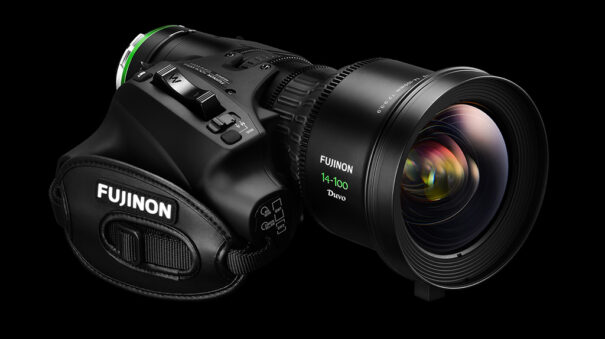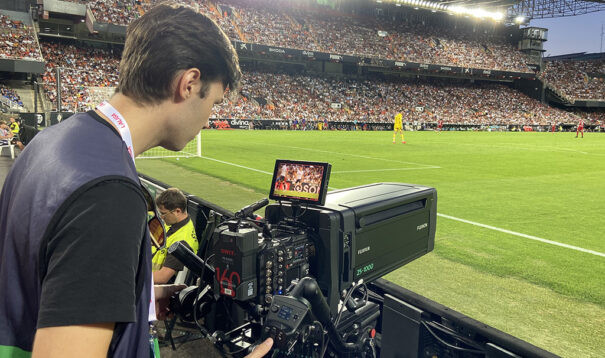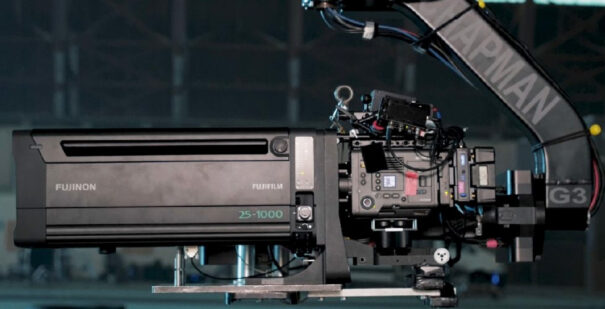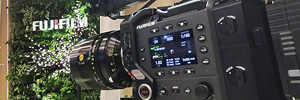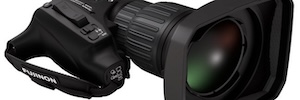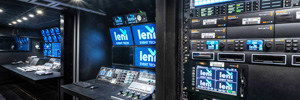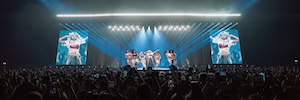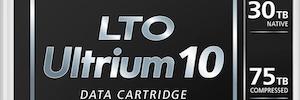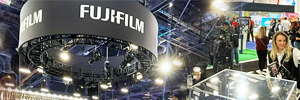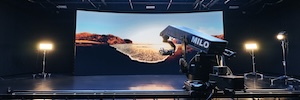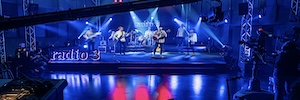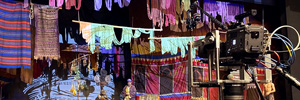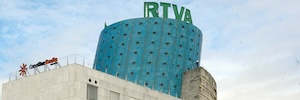Cinematographic Broadcast: Industry (and technology) is already prepared
In this tribune, Santiago Sanz, Optical Devices Commercial and Technical Manager of Fujifilm, analyzes the actuality of the film Broadcast, reviewing its trajectory and its viability of application in the productions of the Spanish industry.
Historically, the Broadcast industry has undertaken all kinds of technological experiments in response to the descent of audiences. A few years ago, the 3D issue was made, and now the last trend that has begun to develop is that of the Cinematographic Broadcast, that opens the door to a new possibility of production. With him, they look for ways to make contents in an original way that can attract new audiences or try to capture the youngest audiences; Customers who, in recent years, had been losing themselves.
Although historically it has been technological ones that have promoted new technologies for contexto broadcast, in the case of Cinematographic Broadcast They have been the own customers Those who have assumed that responsibility.
In recent years, the culmination of HD, we advance to HDR and evolved into 4K, but none of these formats has led to such drastic change in production that they were an innovation remarkable for recover or get audience. At that point, our clients began to do experiments with material by whom and to look for new solutions. And this is very important: although historically it has been technological ones that have promoted new technologies for the Broadcast context, in the case of Cinematographic Broadcast They have been the own customers Those who have assumed that responsibility.
These companies were doing new tests and looking for solutions. What happened? That in the end what they were trying to do is a Film production at a Broadcast event, which have completely different technical requirements in terms of signal collection, transmission, storage or postproduction.
The response of manufacturers to the incipient cinematographic broadcast
In the case of capture, it is true that from Fujifilm We had been counting for more than 10 years with cinematographic equipment that, in some way, could work in more formats broadcast Thanks to our already developed adapted handles. Even so, we still had limitations regarding Focal lengths and to certain characteristics closer to traditional television environments.
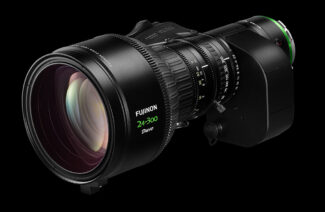 After observing how our clients experienced in this regard, and after numerous conversations with them, from factory it was decided develop Equipment explicitly designed to work in formats Super 35 and full frame They are typically cinematic, but with characteristics in the optics that causes Broadcast to resemble productions. This implies that they are smaller optics, have with handles with encoders 16 -bit (which allows you to communicate with any type of virtual system) and can give that look Cinematographic without leaving the usual parameters of Broadcast productions. That is the Great advantage.
After observing how our clients experienced in this regard, and after numerous conversations with them, from factory it was decided develop Equipment explicitly designed to work in formats Super 35 and full frame They are typically cinematic, but with characteristics in the optics that causes Broadcast to resemble productions. This implies that they are smaller optics, have with handles with encoders 16 -bit (which allows you to communicate with any type of virtual system) and can give that look Cinematographic without leaving the usual parameters of Broadcast productions. That is the Great advantage.
Those developments adhoc undertaken by Fujifilm have taken shape in DUVO, a line of cinematographic optics of reduced size that make up a versatile product and capable of providing both the desired field depth, and that cinematographic quality that gives a spectacularity added to the final product, to environments broadcast. The optics DUVO Focal lengths have much closer to the standard Broadcast optics and include handle adapted to these applications. This size helps a lot to coverage Sports and concerts, but also to the recording of Documentaries The formats of Wild life.
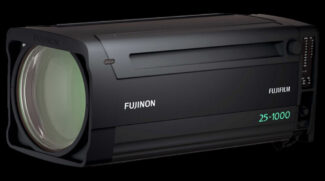 Facing IBC 2024, We will launch the new Fujinon Duvo HZK 14-100mm, one of our most compact options. This optics includes, like the rest of the range, a expander 1.5x that allows to expand the image to cover sensors full frame and adapt to cameras such as the Venice of Sony, Alexa 35 of Arri or the Raptor of Network, among others. Another team of great success and adaptation has been the Fujinon Duvo HZK 24-300mm, a very versatile team with less than 3kg of weight that has allowed, for example, to integrate the look Cinema in previously unthinkable spaces, such as interviews or recordings in boxes in large motor sports awards.
Facing IBC 2024, We will launch the new Fujinon Duvo HZK 14-100mm, one of our most compact options. This optics includes, like the rest of the range, a expander 1.5x that allows to expand the image to cover sensors full frame and adapt to cameras such as the Venice of Sony, Alexa 35 of Arri or the Raptor of Network, among others. Another team of great success and adaptation has been the Fujinon Duvo HZK 24-300mm, a very versatile team with less than 3kg of weight that has allowed, for example, to integrate the look Cinema in previously unthinkable spaces, such as interviews or recordings in boxes in large motor sports awards.
Finally, the Fujinon Duvo HZ 25-1000 It is designed for sports productions or events in which you need to have a Very distant zoom To give prominence to a person located at a distance from the capture unit. With this system, we have seen how operators have been able to do First planes from afar with that cinematographic appearance, throwing an infinitely more infinite result bonito that when you closed the plane to the maximum.
Adapting a production to the film Broadcast
Start implementing a look Cinematographic in a Broadcast format does not imply a drastic change in the design of a production. In the end, what you have to look for is a personalization: Take the structure of your sports production, for example, and adapt it to integrate the new cinematographic flows, not only in the uptake, but also in the signal transmission or lighting. It is an integration, not a substitution. This is fundamental.
Take advantage of Cinematographic Broadcast We are going to demand a extra effort, but it's going to completely deserve.
One of the main advantages that will contribute is to offer much prettier images for the effect bokeh that produce this type of optics due to a decrease in field depth. This will lead to the fact that, from the mobile or the realization control from which the event is taking place, a lot should be lent More attention to focus. Before you could get more or less simple planes just by moving the zoom; You had to focus, but it was not critical. Now, to highlight the protagonist of the scene, you will have to spin much finer in this field. Take advantage of the cinematographic broadcast will demand that all of a extra effort, but it will deserve the penalty.
The traditional broadcast will not disappear. Not at all. But it will have to learn to live with the union of Broadcast and cinematographic signals. We have seen how the use of these solutions in the field of sports productions has helped the narrative of the event, to improve the attractiveness for the viewer, attract their attention and, thus, capture a greater audience.
The great opportunity for the industry
In Spain, we have Many industry actors which have already begun to work on the film Broadcast. Historically, the entire part of fiction It was a pioneer and could successfully adapt these cinematographic flows to the world of series. Now, a decade after this change in trend, the vast majority of series have a Cinematographic finish That, together with our narrative talent, it has helped us establish ourselves as a world reference of this type of formats.
The Technologies that enable the Cinematographic Broadcast They are already prepared. The key is currently reaching that conviction To take a step forward and want to look for that differentiating point Regarding competition.
The technologies that enable the film broadcast are already prepared. The key is currently reaching that conviction To take a step forward and want to look for that differentiating point Regarding competition. The DUVO They are not the only solutions ready for this new context: the industry already offers a wide variety of cameras prepared to adapt in Broadcast environments, as well as fiber transmission systems that allow transporting the signal efficiently to the control room or the mobile unit.
Technology is no longer as it was two years ago. That's it madura. It is time to start exploring the advantages of the film Broadcast and moving forward, step by step, towards your standardization.
Santiago Sanz, Optical Devices Commercial and Technical Manager de Fujifilm
Santiago Sanz
Optical Devices Commercial and Technical Manager de Fujifilm
Did you like this article?
Subscribe to our NEWSLETTER and you won't miss a thing.




